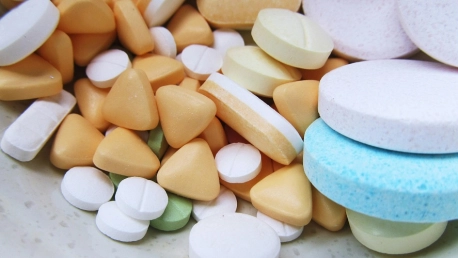The pharmaceutical world is a key foundation of modern medicine. It offers critical treatments that help millions survive globally, as well as improve their standards of living. Nevertheless, underneath all these major advantages lies an unclear issue that affects both patients and healthcare systems greatly: counterfeit drugs. These are drugs that are deliberately and fraudulently mislabeled with respect to identity and source and can be anything, from incorrect dosages and fake ingredients to completely bogus packaging.
The problem of fake drugs is a significant global challenge rather than just a small issue. An estimated 10% of medicines in developing countries are either substandard or falsified, according to the WHO (World Health Organization) statistics. This leads not only to tragic health consequences but also costs billions of dollars annually for the global economy.
Healthcare efficiency is derailed by the widespread circulation of counterfeit pharmaceuticals, which worsen antimicrobial resistance and are responsible for the depletion of public confidence in medicine and healthcare practitioners. This article will examine the difficult issue of falsified medicinal products, showing how modern technical aids appear to be fundamental tools in the fight against spurious drugs.
Common Types of Counterfeit Pharmaceuticals
Counterfeit pharmaceuticals come in two main types: substandard drugs and falsified medicines. Substandard drugs are genuine products that fail to meet quality standards or specifications, often due to poor manufacturing practices or inadequate storage conditions. In contrast, falsified medicines are intentionally mislabeled to deceive consumers about their identity or source. They may contain incorrect doses of active ingredients, no active ingredients, or harmful substitutes and are frequently packaged to convincingly mimic legitimate products.
How Counterfeit Medicines Enter the Supply Chain
Fake drugs find their way into the supply chain via different points at which vulnerabilities exist because they take advantage of gaps within regulations coupled with complicated distribution networks. Loose law enforcement makes it easier for fake medicines to enter these areas’ markets. There are multiple entry routes for counterfeit goods into multi-tiered international supply networks due to the many go-betweens involved. What makes matters even worse is that the proliferation of online pharmacies has made it simpler for counterfeiters to sell directly to consumers, frequently bypassing traditional safeguards.
Regions Most Affected by Counterfeit Pharmaceuticals
The prevalence of counterfeit pharmaceuticals varies significantly across regions. Developing countries in Africa, Asia, and Latin America are especially vulnerable due to weaker healthcare infrastructures and regulatory frameworks. Patients often seek cheaper alternatives because of economic constraints, which may result in their purchase of fake drugs. Even the most developed countries are not totally safe from this menace. The fact that counterfeit drugs can come from any part of the world due to the globalization of supply chains means there is no place on earth where people will not have access to such harmful substances.
Consequences of Counterfeit Pharmaceuticals
Patient health can be severely affected by counterfeit meds in ways that can result in the drugs not working at all or even dangerous consequences sometimes. This is because this medicine usually has incorrect or harmful components that make it unable to cure targeted illnesses, leading to a deteriorating health situation. Some of these fake medications contain toxic substances that, when used, ruin one’s body, leading to poisoning or problems even later in life.
Economic Impact on the Pharmaceutical Industry
The economic repercussions of counterfeit pharmaceuticals extend beyond public health. The pharmaceutical industry suffers significant financial losses due to these fake products. Counterfeit drugs dilute the market, reducing the revenue that legitimate manufacturers can earn.
In addition, fighting counterfeits results in additional expenses on the part of companies that go beyond increasing awareness among the masses or introducing new features in the packaging of medicines themselves. The legal battles and possible settlements are among the reasons why phony drugs are expensive to handle.
Erosion of Trust in Healthcare Systems and Providers
One of the things phantom drugs do is cause great damage by causing people not to trust health providers or systems. Trust in medication goes down when sick people get the wrong drugs to treat them or even get worse. When this type of thing happens, patients may develop a lack of confidence in seeking medication or following specific treatment patterns. Consequently, this complicates the activities of fighting against public diseases. Healthcare providers, in turn, face challenges in maintaining professional credibility and must work harder to rebuild patient trust and confidence in the system.
Technological Innovations Combating Counterfeit Drugs
To combat the pervasive issue of counterfeit pharmaceuticals, the industry is increasingly turning to advanced technological solutions, including serialization and tracking, blockchain technology, and the use of artificial intelligence (AI) and machine learning (ML).
Serialization and tracking
This approach involves assigning a unique identifier to each drug package, which enables tracking each product from manufacture to sale. By marking packages with unique identifying features and incorporating information like lot codes plus expiry dates, it becomes possible to monitor in meticulous detail every movement taken by an individual item after being manufactured. In order to ensure that globalization is adhered to at all times, it is advisable for producers to use identification codes that conform with those established by GS1, such as the Uniform Product Code (UPC).
Blockchain technology
The technology of a decentralized ledger warrants that all the transactions related to the path of the drugs are legitimately registered and verifiable by each mate, which shows any tampering straight away. Major businesses such as IBM have been known to test notable blockchain solutions that allow for the tracking of vaccines as well as tougher adherence to storage practices.
Artificial intelligence and machine learning
Artificial intelligence systems excel in examining extensive datasets to identify trends and irregularities that could signal fraudulent behavior. For instance, discrepancies in purchase or delivery logs can raise red flags for possible counterfeit operations, and machine learning algorithms are now more commonly utilized to validate the composition of pharmaceuticals. These algorithms can swiftly and precisely conduct chemical assessments throughout different points in the distribution process, offering a reliable approach to confirming the legitimacy of medications.
Challenges and Limitations
Despite many challenges and limitations, counterfeit pharmaceuticals continue to be a problem even though advances in technology appear to promise an end to it. This myriad of obstacles comprises technical, legal/ethical aspects and opposition from the pharmaceutical industry itself.
Technical Challenges in Implementing Advanced Technologies
Existing pharmaceutical supply chains face more than a few hurdles when it comes to integrating tech like AI and blockchain, like how adopting blockchain necessitates extensive alterations in the existing IT infrastructure. You will have to invest in a lot of training and educating for stakeholders so they’ll actually be able to use the new system.
In addition, ensuring optimal performance between different countries and companies can be extremely complicated and use a lot of resources. Plus, you’ll have to scale the tech so you’ll be able to handle and process loads of data without any hiccups or drops in productivity.
Ethical Considerations
Applying Artificial Intelligence (AI) plus blockchain technologies within pharmaceuticals produces significant law and morality issues. Systems that follow drug flows alongside patient data across universal channels have raised alarms over information security issues. There are many national and international laws on data protection that every company must follow, the most notable of which is the GDPR. Additionally, the use of AI in drug verification processes must be transparent and accountable to prevent biases in machine learning models which could lead to erroneous outcomes affecting patient safety.
Resistance and Obstacles from Within the Pharmaceutical Sector
Opposition from within the pharmaceutical sector can impede the integration of innovative technologies. Certain companies may consider the expenses associated with introducing new systems to be excessively high, particularly when the advantages are not immediately apparent. Additionally, there is apprehension about disturbing current procedures that are believed to be sufficiently efficient. Moreover, smaller pharmaceutical firms may not have the resources required to fund advanced technologies, resulting in variations in how various segments of the industry address the issue of counterfeit medications.
Final Thoughts
Fighting counterfeit drugs is vital as it helps in protecting public health and fostering trust in worldwide healthcare systems. Counterfeit drugs pose a serious threat as they can harm individuals by providing either ineffective or harmful substances, potentially causing the pharmaceutical industry to crumble due to economic uncertainty and the erosion of trust in the healthcare system. The repercussions of not taking action are far-reaching, underscoring the necessity for all stakeholders, including governments, regulatory bodies, drug manufacturers, and healthcare professionals, to stay alert and take proactive measures to combat this issue.
It’s extremely important for every business to perform research consistently and develop the correct strategies and frameworks. The fight against fake drugs will only succeed if society comes together. In order to do so, organizations need to use modern technology and work together with other nations for this purpose, hence creating a reliable healthcare industry.









